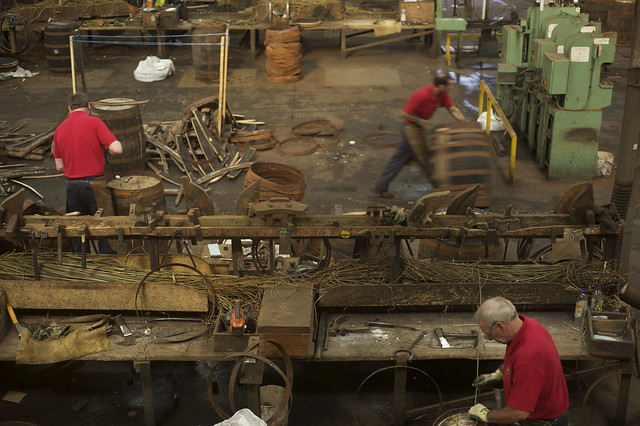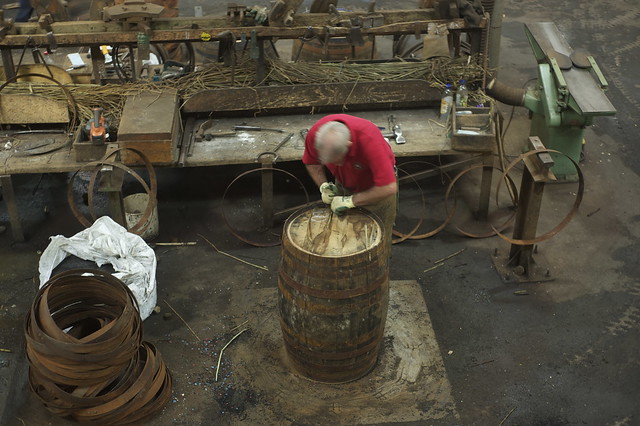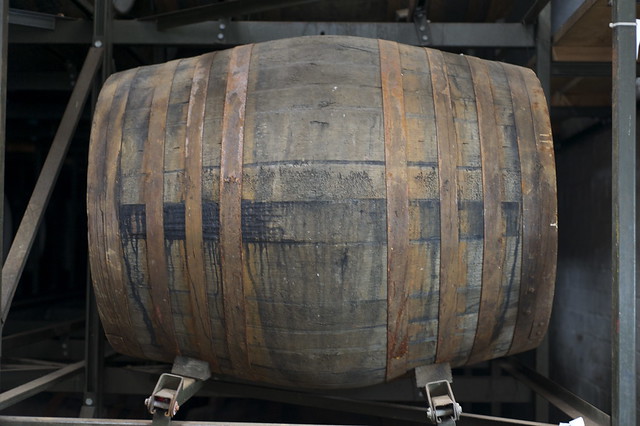As important as the few raw ingredients that go into whisky is the cask in which the spirit is aged. Indeed it’s the interplay between the spirit and the cask wood that gives any whisky its flavour. And coming by the right cask is no mean feat as I found out when I got a look see inside the Speyside Cooperage near Aberlour Distillery.
In the case of Aberlour, most of its single malts are double-cask matured in first fill ex-Bourbon casks and ex-Oloroso Sherry butts which have been personally selected for the right aromatic qualities by Aberlour’s own Blender from traditional bourbon distilleries in the USA and Sherry makers in the Jerez area of Spain.
The wood used for Aberlour’s casks may come primarily from Spain and the US and be approved by the Blender, but much of it is sourced via the local Speyside Cooperage in Craigellachie, just a short drive up from the distillery. As in my last piece where I argued that distilleries are worth a visit no matter your inclination or aversion to whisky, any admirer of traditional craft would find value sneaking a peak in a cooperage. And that’s just what’s on offer at this one: the chance to watch skilled artisans hard at work adhering time honoured tradition and practical know-how to each cask repaired or assembled.
Speyside Cooperage is the only working cooperage in the UK. Family owned and more than a half century old, the cooperage produces the hight quality casks finest casks using traditional methods and tools. Its casks are shipped across the world, with many of them staying in Scotland.
There’s a visitor centre, gift shop and cafe on site, as well as an “Acorn to Cask” exhibition for learning about how casks are made and used. What I loved most when I dropped by was the raised viewing platform stretching across the coopers’ workspace where I got to observe and marvel at their efficiency and ability. Making casks may not sound too terribly complex or difficult – but it requires loads of skill. The cooperage has an activity area next to the viewing platform where guests can have a go assembling a cask, as I did. It was tough, like trying to put together a jigsaw puzzle while jugging all its pieces at the same time.
On top of a deeper appreciation for the thought and elbow grease that goes into a cask, I learned a few things as well. Before my visit, I just assumed all casks were barrels – that the two terms were interchangeable. Not! A barrel is a relatively small type of cask, and the term cask generally refers to by cylindrical container of liquid (usually made of wood). There are also drums, puncheons, hogsheads, butts, tuns and more. Keep these distinctions in mind. They could prove to be all that stands between you being a barrel of laughs at your next whisky tasting or the butt of the joke.
For details about visiting Speyside Cooperage, go to speysidecooperage.co.uk.
More to come in my short series of posts about discovering Aberlour at the Source …
Founded in 1879, Aberlour distillery is located outside of the village Craigellachie about an hour’s drive either way from Aberdeen or Inverness. The whisky made here is indeed fine to drink particular during a scenic Speyside expedition. Find out more at aberlour.com.

























Pingback: Aberlour at the Source: More than Whisky
Pingback: Aberlour at the Source: Fine Finish